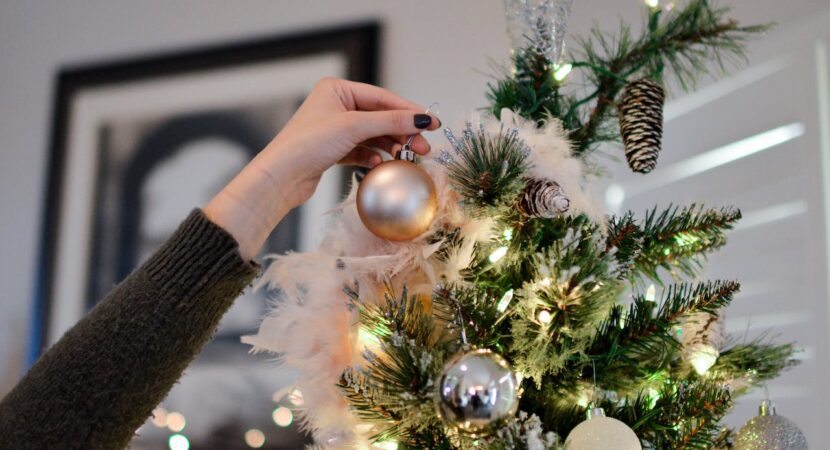Last Updated on
As the holiday season draws near, people face a choice between two options for decorating their homes: living trees versus artificial ones. While each has pros and cons, ultimately, the decision depends on personal tastes and priorities during this time of year. Some individuals appreciate a living tree’s natural beauty and scent, while others favour an artificial alternative’s convenience and longer lifespan. Whichever selection they make adds to the warm and traditional feel of the holidays, evoking feelings of comfort and nostalgia.
The History of Artificial Christmas Trees
The artificial Christmas tree is an object that has garnered significant attention over the decades. Initially introduced by Addis Brush, a respected toilet brush manufacturer, in the early 1930s, these trees quickly gained popularity due to their durability and cost-effectiveness. By 2007, annual sales had reached an astonishing 18 million in the US alone.
The reasons behind their success are multifaceted; individuals appreciate their longevity and reusability, making them an attractive option for those seeking to reduce waste. Moreover, there has been a growing interest in environmentally friendly alternatives during the holiday seasons. While some view artificial trees as a more sustainable choice than cutting down real ones, it’s important to acknowledge the potential drawbacks associated with their construction and disposal.
For instance, several artificial trees contain hazardous substances, including polyvinyl chloride (PVC), which exposes users to lead and other toxic compounds. The manufacturing process also releases harmful dioxins, putting human and animal populations at risk. These non-biodegradable products can never be recycled, contributing further to the global plastic crisis. A disturbing aspect of the industry is that many artificial trees produced are sourced from countries abroad, undermining local enterprises. Lastly, the sparkling branches of artificial trees pose a greater fire risk when compared to natural ones.
While convenient and economical, it is vital to recognise the consequences of creating and discarding artificial trees on the environment. Therefore, as consumers, we should thoughtfully evaluate the advantages and disadvantages before incorporating this practice into our celebrations.
The Advantages of Living Christmas Trees
Living Christmas trees, on the other hand, have their unique set of advantages. Most living trees are grown by farmers, and the industry employs many people. In the US alone, approximately 30 million real Christmas trees are sold each year, supporting employment in the industry. These trees provide economic benefits, contribute to cleaner air, and serve as shelter for local wildlife. For every tree cut down, multiple new trees are planted, ensuring the sustainability of the industry. Furthermore, the fresh scent of a living tree brings an unmistakable Christmas ambience to your home, creating a festive atmosphere that cannot be replicated. Choosing a real tree can also be a fun and exciting family activity, as you can go out together and select the perfect tree for your celebrations.
One significant advantage of ordering living Christmas trees is their recyclability. Many local authorities now offer kerbside collection services for unwanted Christmas trees, ensuring they are properly recycled and not end up in landfills. However, it is crucial to consider the cost associated with living trees, as they need to be purchased annually. Some individuals may opt for trees with root balls to keep them alive for future use. However, this can be a time-consuming and often unsuccessful endeavour. Living trees also require regular watering and tend to shed needles, which can be an ongoing cleanup task throughout the year.
Disadvantages of living Christmas trees
While the idea of having a living Christmas tree might seem enchanting, there are some potential downsides to keep in mind. For one, they tend to have a relatively short lifespan and require regular care to prevent wilting and needle loss. Some people may also experience adverse reactions to the organic compounds found in living trees, which could pose a health concern.
Furthermore, harvesting living trees can contribute to environmental degradation and deforestation, even when sustainable methods are employed. Limited varieties and sizes and difficulties in repotting them after the holidays add additional complexity. Lastly, cleaning up after a living tree can be pretty messy due to its tendency to shed needles.
Making the Decision
When deciding whether to choose a natural or artificial Christmas tree, various factors must be taken into account. Aesthetics, convenience, budget, environmental impact, health concerns, and cultural traditions are among these elements. Natural beauty, scent, and distinctiveness distinguish actual plants from synthetic ones.
Artificial trees provide comfort and versatility in design, although they demand ongoing care. The price tag differs depending on the option chosen; though genuine trees might save money initially, extra costs accrue throughout their lifespan, whereas fake trees necessitate an increased initial outlay that pays off over time. Sustainability affects how much harm it causes, with organically grown actual trees benefiting the environment despite artificial trees’ drawbacks because of their non-biodegradable construction.
Real trees require regular hydration and cleaning up after falling needles, while artificial trees are simple to maintain and store away neatly. Allergy sufferers should consider the latter since genuine trees can cause responses, making them hypoallergenic. Some people value choosing a living plant year after year as part of their holiday custom. In contrast, others enjoy the dependability of synthetic trees, which can develop into a lasting ritual for families. Fire hazards, storage, and available room also influence this choice. Proper watering makes live plants secure even though they can catch fire if neglected, while artificial trees incorporate flame-retardant substances and simple storage alternatives.
Conclusion
In conclusion, both types of trees have their merits and drawbacks. If you prioritise convenience and cost-effectiveness, an artificial tree may be the right choice for your family. However, you value the traditional Christmas experience. In that case, with the smell of fresh pine and the opportunity to support the environment and local communities, a living tree is the way to go. Whichever option you choose, may your Christmas celebrations be filled with joy, warmth, and the spirit of the season.


Reply